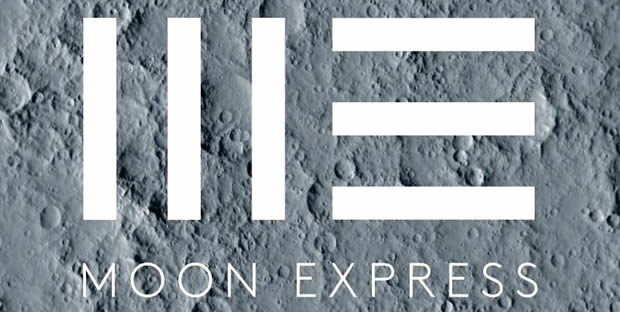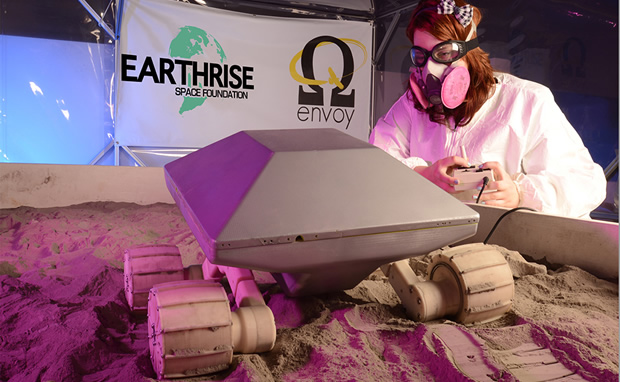The space race is on
Man on the moon has already been a great achievement in our lifetimes; however for the first time in the history of space travel, a private enterprise will leave this world to explore another. The federal government will permit a US start up to send a robotic spacecraft to the moon next year, paving the way for the company to be the first non-government organisation to land on the moon.
With this in mind the Google Lunar XPRIZE, an unprecedented competition to inspire and challenge engineers, innovators and entrepreneurs from around the world to win $30m, started with 29 teams and now just 16 remain. How do you win? Just develop low-cost methods of robotic space exploration.
A winning team must successfully place a robot on the moon’s surface, travel at least 500m and finally transmit HD video and images back to Earth, to be in with a chance of winning Google’s $30m prize money.
Put simply the Lunar XPRIZE is: ‘sixteen teams- 238,900 miles- one dream.’
It was on the 8th December, that XPRIZE announced that the second team to receive verification and approval of the launch contract for the 2017 Lunar Mission would be Moon Express. Only three teams so far have secured their contract to launch next year.

Contracted with rocket Lab USA, their lunar mission is scheduled for taking place in 2017, using the MX-1E lunar lander on Rocket Lab’s Electron rocket. Moon Express’ near term goal is to provide low-cost missions to the moon for science and commerce. Unlocking lunar resources for the benefit of humanity is their long term goal.
Moon Express believes it’s crucial for humanity to be a multi-world species. The moon, our sister world, is an eighth continent holding vast resources that can help us secure and enrich the future. A lot of the Earth’s elements are believed to have originated from space and these are largely present on the surface of the moon.
Naveen Jain, (pictured), Co-Founder and Chairman of Moon Express, has a very clear mission, and string beliefs that him and his team are very capable. He expressed that the sky is the limit- imagination is the only limit you have. “When I started this journey I had nothing but imagination.”
That Helium 3 (He-3), has been dumped on the moon in vast quantities by solar winds, and is the best way to create fusion energy, and could prove valuable if fusion reactors ever become feasible in the future.
It is an element that’s in abundance on the moon; this was the idea behind Moon Express, to go to the moon, collect the moon dust containing the Helium 3 and bring it back to earth. If a tiny amount of the Helium 3 can provide the energy for this planet for generations to come, it will be considered successful. .jpg)
“The sky is not the limit for Moon Express- it is the Launchpad,” Jain commented. “In 15 years, the moon will be an important part of earth’s economy, and potentially our second home- imagine that.”
Only three teams so far have had their mission approved. The remaining 13 teams have until December 31, 2016 for their launch agreements to be verified by XPRIZE in order to proceed in the competition.
The most recent team to be granted verification is Team Synergy Moon, who is an international team that is working with groups in more than 15 countries. The team includes Randa and Roderick Milliron, the co-founders of Interorbital, a team from the Ansari XPRIZE, the original and very first XPRIZE competition awarded in 2004, for suborbital spaceflight.
SpaceIL was the first Google Lunar XPRIZE team to produce a verified launch contract for the 2017 mission, using a SpaceX Falcon 9 launcher via Spaceflight Industries.
SpaceIL announced back in October 2015, in Jerusalem, Israel, that a significant milestone in its race to the moon had been achieved: securing a “ticket to the moon” and aims to accomplish not only the first Israeli mission to the moon, but also the world’s first private lunar mission.
Today there isn’t the money or facilities to run an Apollo mission for just anyone, so the ideas approach had to be radically different, as now the space crafts that are being built are so much smaller and with such different technology.
Stjepan Bedic, from Team Stellar said: “20 years ago it was not possible- you could calculate your trajectory to the moon with online software, and now you can.”
A lot of teams and founders are doing this as a full time job, without any income. Many have emptied their life saving into this project. Sometimes it’s digging extremely deep to find that motivation to carry on.
Along the way there have been so many learning curves and trial and errors for the contenders. One rover did not have wheels, one rover that was spherical; another trial was a hopper, which was described as just hoping from place to place.
However over the course of the competition there have been some amazing breakthroughs in technology- and that is just so far.
A noticeable factor is throughout the teams there are not a lot of women, yet Deepana Gandhi of Team Indus says she hopes that this competition will help that: “to inspire both boys and girls to get involved in science technology, engineering and math work.”
So the only thing left is ‘To change things above and beyond.’ Let the ‘Space Race’ begin.








